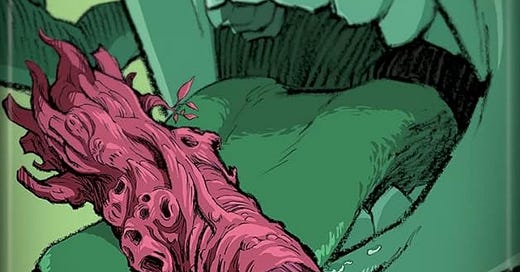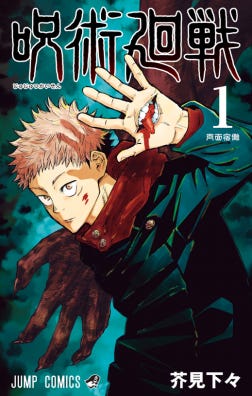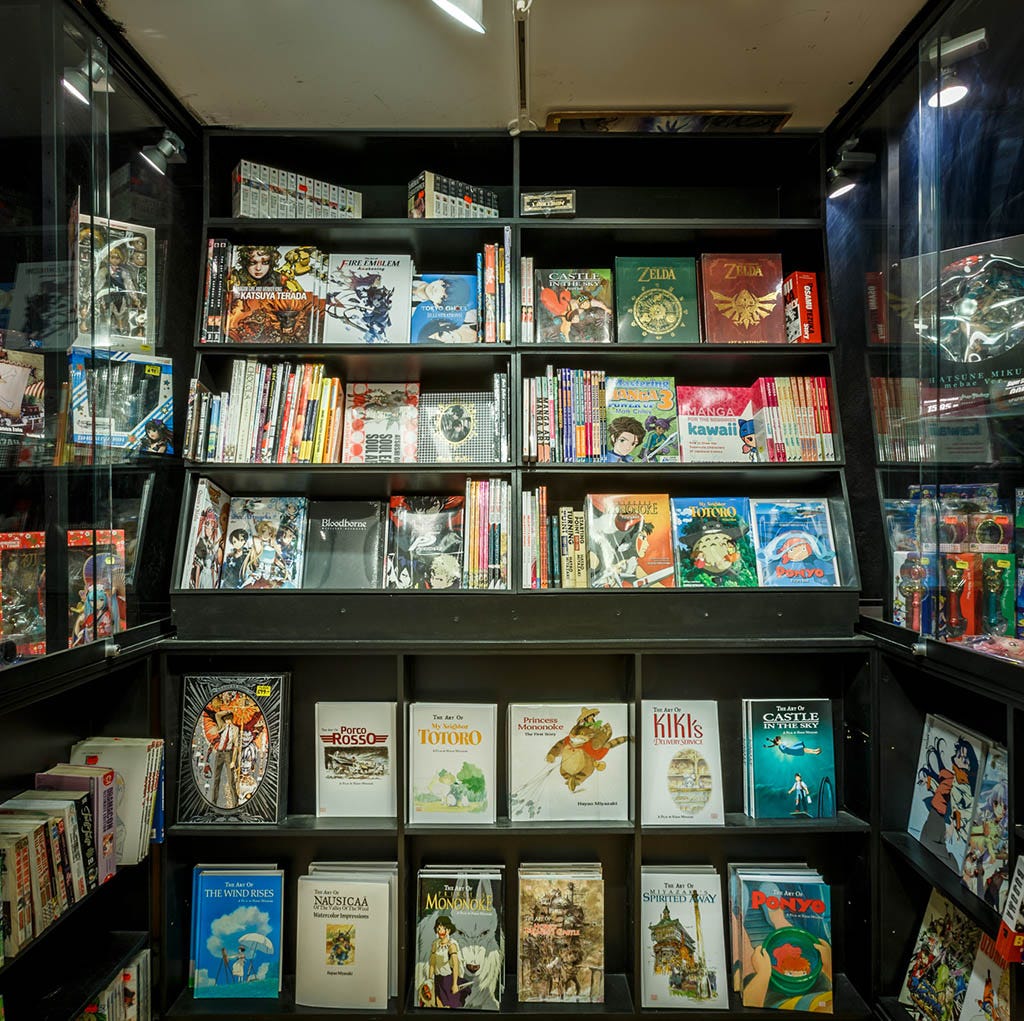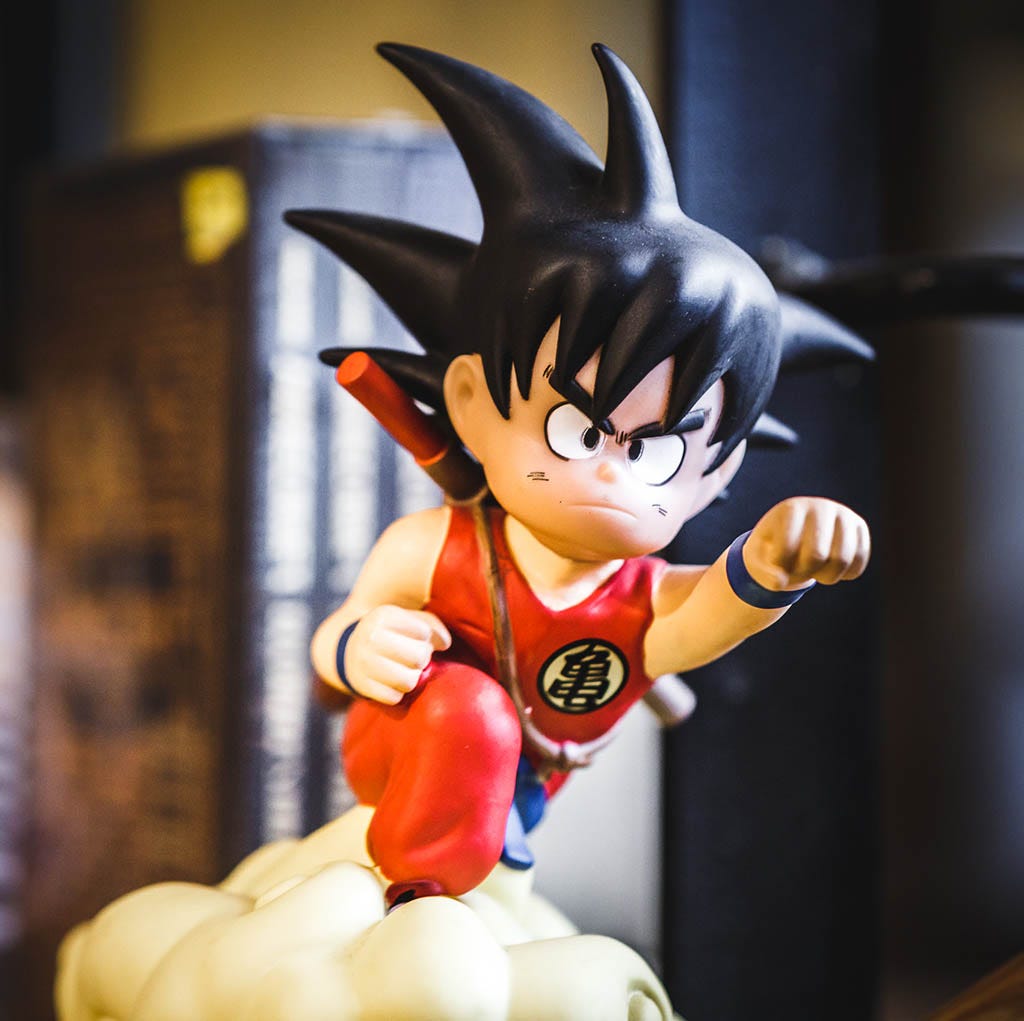Last week, my son was reading Jujutsu Kaisen. The cover page of Jujitsu Kaizen featured an adolescent boy with a mouth in his hand. The mouth in Yuji's hand is depicted with a set of sharp teeth and a menacing appearance. Later, I learned that the cover page depiction of Yuji Itadori with their mouth in his hand is one of the most memorable and haunting images of the Jujutsu Kaisen Manga Series.
My childhood was spent reading the entire series of Secret Seven, Famous Five, Champak, Twinkle, Chacha Chowdhury, Phantom, Mandrake, Shikari Shambu, and Supandi. Hence it was a culture shock for me to glance through the pages of Jujutsu Kaisen. Each page of Jujutsu Kaisen was infused with blood and gore. I was wondering what facets of the book are attracting the young readers of today. For the first time, I felt I belonged to an older generation. I have never read a manga comic, so I thought to take a slow dip in the waters.
Curiosity got the better of me and I found myself with my son and wife in Farro Cigarer, the iconic book in Copenhagen, which is a treasure trove for Manga enthusiasts.
Farro Cigarer was founded in the early 20th century by Hans Farro, a passionate book lover and cigar enthusiast. The bookstore started as a small shop selling books and cigars, catering to Copenhagen's growing community of intellectuals and artists. Over the years, it evolved into a larger space, dedicated entirely to books, while still retaining its unique name that pays homage to its origins.
Farro Cigarer’s manga section is a testament to the store's dedication to offering a wide range of literary experiences. The collection features titles that cater to both newcomers and seasoned manga readers. From iconic series like Naruto, One Piece, and Attack on Titan to critically acclaimed works such as Akira, Berserk, and Monster, the selection is diverse and inclusive.
The bookstore also highlights lesser-known gems and independent manga, allowing readers to discover new and unique stories. This curated approach ensures that the manga collection is not only comprehensive but also reflects the breadth and depth of the genre.
In the bookstore, I learned that there are various types of manga and the distinctive Japanese art form that has taken the world by storm with its diverse genres and captivating storytelling. From action-packed adventures to heartwarming romances, manga seems to offer something for every reader. And so far, in my life, I was unaware of this world.
Manga can be broadly categorized based on its target demographic and themes.
The primary categories:
1. Shonen
Target Audience: Young males, typically ages 12 to 18.
Themes: Adventure, action, friendship, and coming-of-age stories.
Examples: Naruto, One Piece, Dragon Ball.
Shonen manga is known for its dynamic action sequences, strong themes of camaraderie, and protagonists who grow and evolve through their journeys. It often involves battles, quests, and personal development.
2. Shojo
Target Audience: Young females, typically ages 12 to 18.
Themes: Romance, relationships, and emotional growth.
Examples: Demon Slayer, Sailor Moon, Ouran High School Host Club, and Fruits Basket.
Shojo manga focuses on romantic relationships and personal development from a female perspective. It often features beautifully detailed artwork and explores themes of love, friendship, and self-discovery. However Demon Slayer has a darker theme.
3. Seinen
Target Audience: Adult males, typically ages 18 to 40.
Themes: Mature content, psychological depth, and complex storylines.
Examples: Berserk, Tokyo Ghoul, Akira.
Seinen manga delves into more mature and often darker themes. It can include graphic violence, psychological horror, and intense drama, appealing to an older audience with its complex narratives and character development.
4. Josei
Target Audience: Adult females, typically ages 18 to 40.
Themes: Realistic romance, adult relationships, and daily life.
Examples: Nana, Paradise Kiss, Honey and Clover.
Josei manga portrays more realistic and mature romantic relationships and life experiences from a female perspective. It addresses themes like career challenges, family dynamics, and personal growth.
5. Kodomo
Target Audience: Young children, typically under 12.
Themes: Educational content, simple stories, and moral lessons.
Examples: Doraemon, Pokémon Adventures, Anpanman.
Kodomo manga is designed for young children and often includes educational elements, simple plots, and clear moral lessons. The stories are straightforward and filled with humor and adventure suitable for a younger audience.
Doraemon and Pokemon were the only manga series, which I knew before this post. I haven't met a kid so far, who is not a fan of Doraemon and Pokemon and it speaks volumes of the soft power of Japan.
Subgenres and Themes
Beyond the main categories, manga can be further divided into numerous subgenres based on specific themes and content. Some popular subgenres include:
Isekai: Stories where characters are transported to another world (e.g., Sword Art Online, Re: Zero).
Mecha: Focuses on robots and mechanical suits (e.g., Mobile Suit Gundam, Neon Genesis Evangelion).
Sports: Highlights athletic competitions and sportsmanship (e.g., Haikyuu!!, Slam Dunk).
Fantasy: Includes magical worlds and mythical creatures (e.g., Fairy Tail, The Seven Deadly Sins).
Horror: Explores supernatural and terrifying elements (e.g., Junji Ito's Uzumaki, Tokyo Ghoul).
Adult: Never knew that erotic themes also have manga equivalents. I am clear that I am not going to read them.
I started to wonder why some of the manga comics are so dark and why it is so different from the innocent children comics, which I read in the 1980s. The answer lies in the roots of Manga.
The roots of manga can be traced back to ancient Japanese art forms such as emaki (picture scrolls) and ukiyo-e (woodblock prints). Emaki, which emerged during the 8th century, combined images and text to tell stories, often depicting historical events, folklore, and religious tales. These scrolls were precursors to modern manga, emphasizing a narrative-driven visual style.
In the Edo period (1603-1868), ukiyo-e became popular. These woodblock prints often depicted scenes from everyday life, kabuki theater, and legends. Artists like Katsushika Hokusai, who coined the term "manga" in the early 19th century, contributed significantly to the development of this art form. Hokusai's Hokusai Manga, a collection of sketches, showcased a wide range of subjects and styles, influencing future generations of manga artists.
Manga had a rapid offshoot post World War 2, which was a period marked by significant cultural and economic changes in Japan. Osamu Tezuka, often referred to as the "God of Manga," revolutionized the medium with works like Astro Boy (Tetsuwan Atom) and Black Jack. Tezuka's cinematic storytelling techniques, complex characters, and ethical dilemmas set the stage for manga's global appeal.
The prevalence of dark themes in manga can be attributed to Japan's cultural and historical context. Japan has a rich tradition of ghost stories, folklore, and supernatural tales, which naturally found their way into manga. Additionally, the aftermath of World War II left a profound impact on Japanese society, influencing manga creators to explore themes of trauma, loss, and existential angst. I believe the Hiroshima and Nagasaki bombings had a lasting influence on the Japanese psyche, which has found its influence in their books and movies.
Manga often delves into the complexities of the human psyche, addressing themes such as fear, despair, and the struggle for identity. This psychological depth resonates with readers, offering a cathartic experience and a means to confront their inner demons. I believe comics and movies are also a reflection of the current society. Hence dark themes in manga also serve as a medium for social commentary. Creators use their narratives to critique societal issues, such as corruption, inequality, and the pressures of modern life.
I have a contentious point of view. I believe that the children of today are more exposed than our generation. Hence dark themes in manga might resonate more with young readers, as they reflect real-world issues and tackle themes like loss, struggle, and moral ambiguity. I believe that these stories must provide a sense of validation and understanding for readers, who might be facing similar challenges in their own lives. Of course, one cannot rule out peer pressure. Experiencing darker themes through fiction can provide a form of catharsis, allowing readers to process difficult emotions in a safe and controlled environment. Manga that explores intense themes can offer a way to confront and cope with real-life anxieties and fears.
Going back to the book, my son was reading - Jujistu Kaizen, it is a contemporary manga series that embodies many of the traditional dark themes found in older works. The series centers around Yuji Itadori, a high school student who becomes entangled in the world of curses and sorcery. If Harry Potter had been invented in Japan, it would have turned into a dark fantasy manga.
Who is Yuji Itadori?
Yuji Itadori is not your average high school student. Though he possesses extraordinary physical abilities, he prefers to keep a low profile, spending his time with the Occult Club at his school. He lives a relatively normal life, caring deeply for his ailing grandfather, who imparts a crucial piece of wisdom before passing away:
"Always help people."
This simple yet profound advice becomes a guiding principle for Yuji and sets the stage for his journey.
The tranquil life Yuji leads is disrupted when he and his friends from the Occult Club come into possession of a mysterious, ancient relic—a decayed finger wrapped in talismanic seals. Unbeknownst to them, this finger belongs to Ryomen Sukuna, a legendary and malevolent Cursed Spirit. The presence of this powerful cursed object attracts other curses to their school, leading to a series of dangerous events.
Amid the chaos, Yuji meets Megumi Fushiguro, a Jujutsu Sorcerer from the Tokyo Metropolitan Magic Technical College. Megumi is on a mission to retrieve the cursed object and prevent calamities. However, the situation quickly spirals out of control. Yuji, driven by his grandfather's dying wish and his sense of justice, does the unthinkable: he swallows Sukuna's finger to gain the power needed to save his friends.
By ingesting Sukuna's finger, Yuji becomes the vessel for the King of Curses. This act marks the beginning of his journey into the world of Jujutsu Sorcery. Despite the immense power he now holds, Yuji remains determined to use it for good. He is soon taken under the wing of Satoru Gojo, one of the most powerful sorcerers, and enrolled in the Tokyo Metropolitan Magic Technical College.
One of the most compelling aspects of Yuji's character is his internal struggle, which I think has appealed to young readers. Housing Sukuna within him poses a constant threat, as the evil spirit seeks to break free and wreak havoc. Yuji must navigate this precarious balance, all while training to become a competent Jujutsu Sorcerer and searching for a way to rid himself of Sukuna once and for all.
My son believes Jujutsu Kaisen is a story that explores themes of duty, sacrifice, and the battle between good and evil. It delves into the concept of curses and how they shape the lives of those who encounter them. The book treads into a world where the supernatural and the everyday collide, and where the strength of one's spirit can make all the difference.
Overall I believe that Jujustu Kaisen is a gripping introduction to a dark and fascinating series. If you have not read manga, it can be your first book. I had a difficult time processing the dialogue and imagery. I had to take the help of my son to understand the story. I realized that manga comics are not my cup of tea, but I would continue to read them, as it might help me to learn something new about the reading choices of the new generation of shonen readers.
I would love to hear your views on manga comics. Recommendations are welcome.








